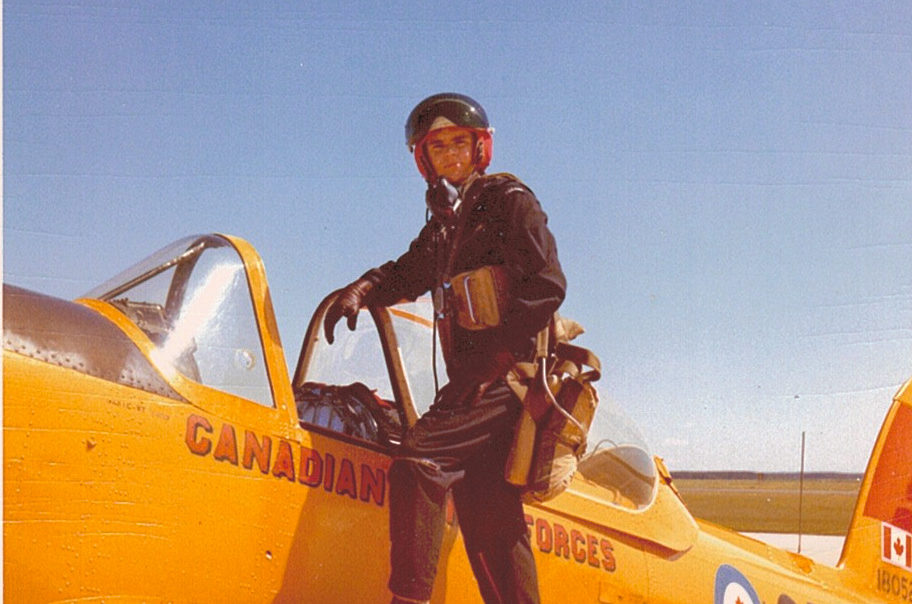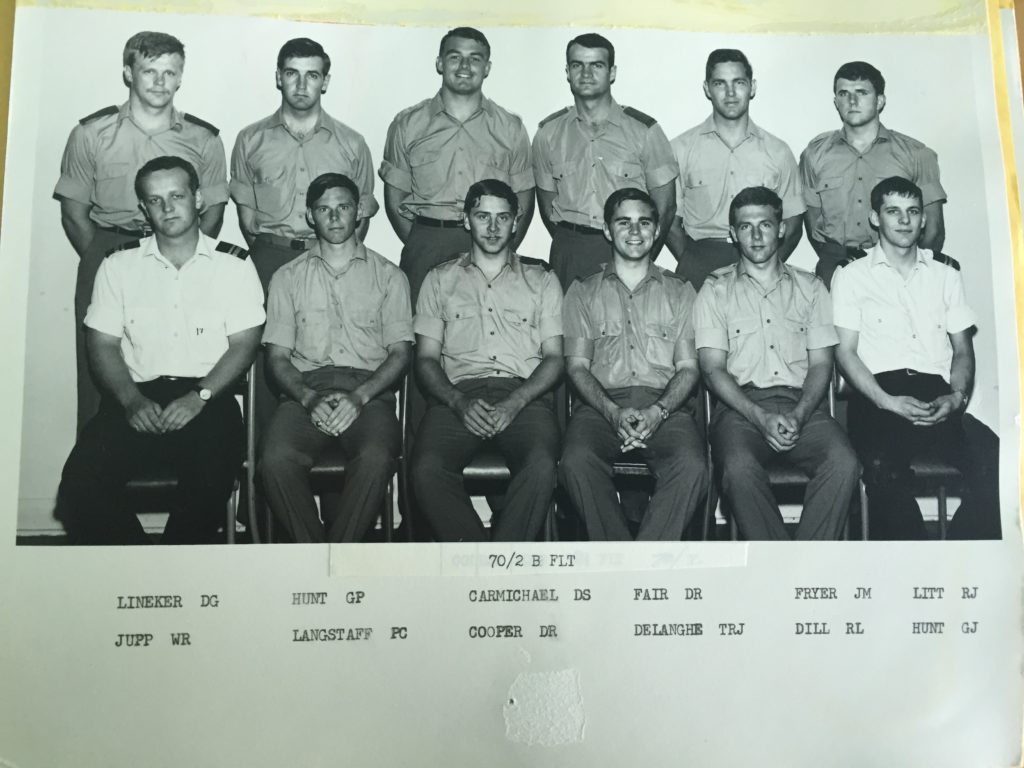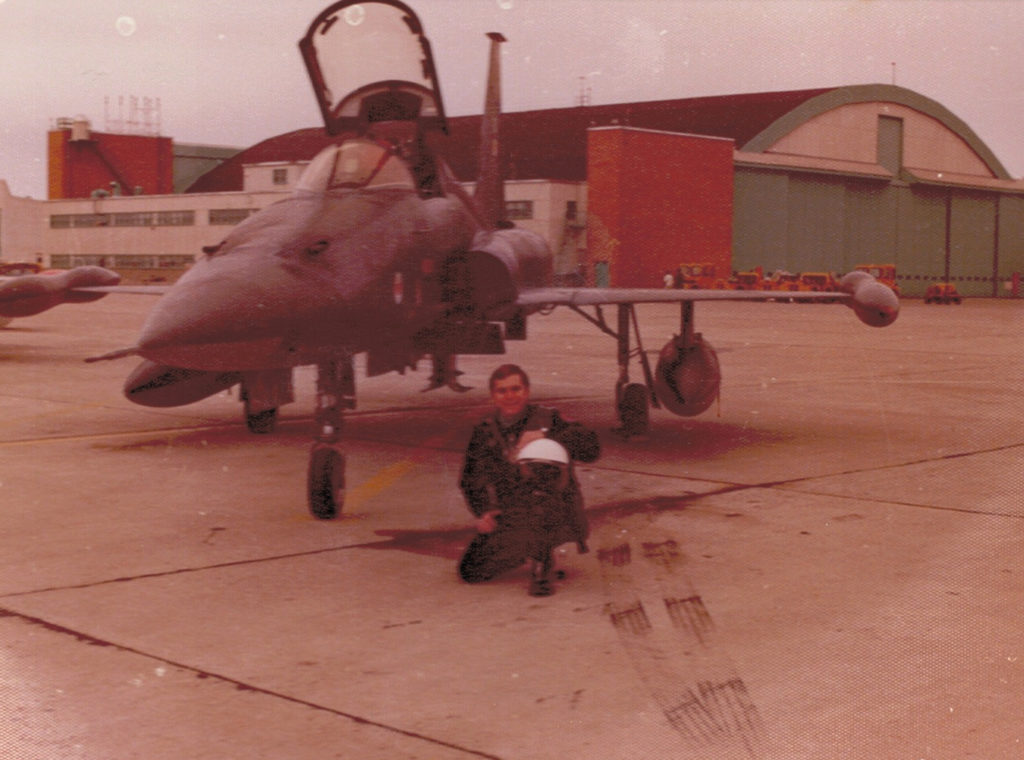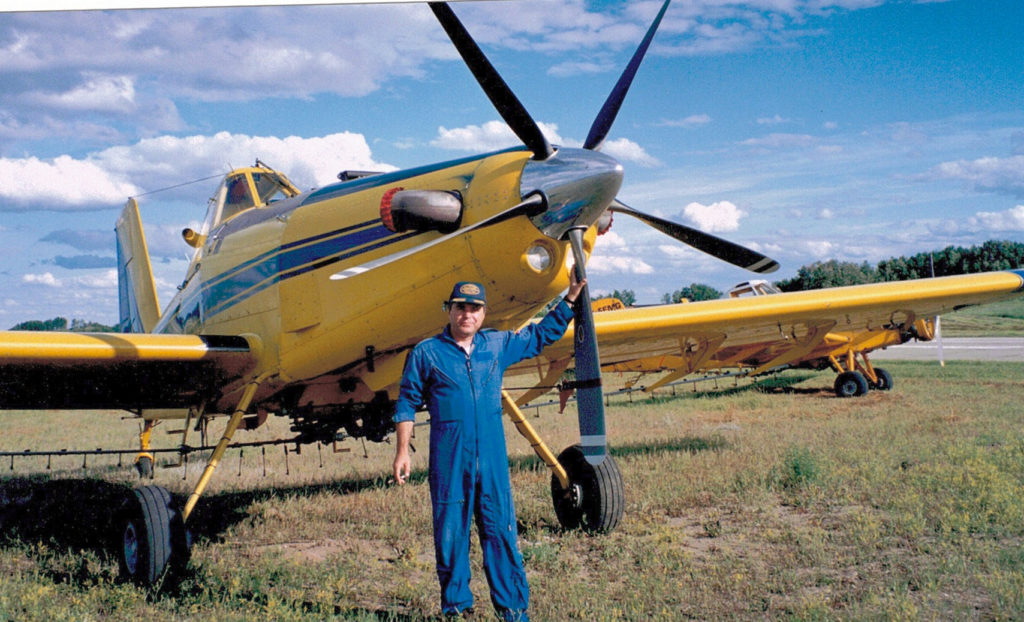Estimated reading time 11 minutes, 14 seconds.
Editor’s note: This is the fifth and final part of “a trip to” series by Ted Delanghe, where the former Air Force pilot recalls extraordinary memories and lessons learned from his time spent flying over 50 different aircraft types around the world. Click to read part 1, part 2, part 3, and part 4.
It was a hot, humid Southern Ontario day in June of 1956. A young boy was standing in the stubble of a cornfield with the sweet aroma of fresh cut alfalfa hanging in the light summer breeze. He was transfixed by the sight above. Billowed, towering cumulus clouds were rapidly growing against the brilliant blue sky, foretelling of a coming storm. Amidst that canvas, a glistening white smoke trail was etching its way slowly across the sky, above the cumulus, with a brilliant shining star at the head of the trail. The boy felt a mixture of awe and trepidation; that night he lay awake for hours pondering what he had seen that day, still not knowing from whence it came, or to where it was going.
Fast forward 14 years to the blistering summer airport tarmac of Canadian Forces Base Portage la Prairie. A student pilot and his instructor walk out to their waiting Chipmunk aircraft. This was to be the student’s first flight at 3 Canadian Forces Flying Training School (3CFTS). As he looked skyward, there, again, over massive cumulus buildups was a white trail flowing across the sky. He had a flashback to that day in the cornfield, where he had been enraptured by what he’d soon discover was the magical and mystical spirit of flight.
I was that young lad in the cornfield, and later walking out to the aircraft at Portage.

For many pilots, some of their most seminal moments come during basic flight training. Those first few trips set the stage for later developments, and — to a large degree — determine how far along the training syllabus each student will progress. For me, that was especially true in the Air Force, beginning with Primary Flying Training at Portage la Prairie. This was a purely selection phase, and if you didn’t pass the very rigorous program, your days as an Air Force pilot were over. But even given that considerable pressure, the excitement, novelty, and challenges made that summer a most memorable one. It was the initiation I had into the fraternity of wings that would shape my career – and indeed my life.
French pilot and writer extraordinaire Antoine de Sainte-Exupéry wrote in Wind, Sand and Stars: “The physical drama itself cannot touch us until someone points out its spiritual sense.” Those words had left me thunderstruck as a young teen, and the summer of 1970 at Portage was an awakening of that spiritual sense within me — a sense that continues to this day.

Our course was one of the very last on the Chipmunk, and we had already been introduced to the beginnings of a career in aviation. At Base Supply, we picked up our flight suits, leather gloves, zipper flight boots, helmets with adjustable visors, and an oxygen mask. I still remember the excitement as we tried the new gear on in the barrack block where we were billeted. On a more sober note, we had also just finished two weeks of arduous class work, learning the fine points of the Chipmunk itself, but also covering what felt like an endless stream of classes: meteorology, avionics, air traffic communications, flight safety, aerodynamics, engine and airframe design and operations, and, of course, professional officer development. The passing mark on all exams was 80 percent, with emergency procedures requiring 100 percent accuracy. You were allowed just two failures. It was no time to skip the books in favor of evening extracurricular activities.
The first flight — aptly titled Lesson Plan 1 — was more of a demonstration trip with the instructor covering the maneuvers we would be required to master in just 26 hours of flight time. The final test would cover the usual exercises such as stalls and steep turns, engine failure scenarios, and circuit work, as well as a short aerobatic sequence covering loops and rolls. Again, the learning curve was steep. The trips were marked either satisfactory or unsatisfactory. If you received two of the latter, a Progress Review Board was set up to determine if you should continue in the program. The pressure to succeed and to pursue excellence was palatable, and a few of the course members would feel the pressure and decide on other career paths. The Air Force approach was that there were plenty of suitable candidates who would take their place, and there was simply no room for performance that didn’t make the grade.

That first trip was a blur, with local area procedures leaving me baffled, the air traffic control lingo unintelligible, and the litany of pre-flight, flight, and post-flight checks leaving me in the dust. A humbling experience, to say the least. This was also my first introduction to aerobatics, and in the scorching summer sun under the bubble canopy, I felt the effects of G and the disorientation of being inverted. Fortunately, I had an excellent instructor who took pity upon this mere mortal, and we flew straight and level with the canopy cracked to let in some welcomed cool air. All was back to normal in just a minute or two.
For those who haven’t had the opportunity to fly a Chipmunk, it is an absolute delight to fly. Light on the controls and wonderfully responsive to control inputs, with the bubble canopy providing an extraordinary 360-degree view of the world. It was an aircraft designed from the ground up to set the standards in flight training.

Aside from the very demanding flying schedule, we were also introduced to the lore of aviation. For most of us, this wasn’t a job. Rather, it was a passioned commitment to aviation. And history was everywhere. The base at Portage had its origins in the Second World War, with the development of the British Commonwealth Air Training Plan. It was a massive training system set up in the late 1930s, primarily on the Canadian prairies, to accommodate the extensive training required for more than 200,000 airmen — including pilots, navigators, gunners, bombardiers, and radio operators — to satisfy the demanding need for aircrew to support the war effort in Europe and elsewhere.
It wasn’t all study, either; “work hard, play hard” became our MO. There were grand times at the Officers’ Mess, typically on Friday evenings after flying operations had shut down, followed by the requisite “TGIF” get togethers to let off some steam while enjoying a pint or two. For young pilots, it was a heady experience, but also one that brought us into this fraternity of wings that would later cover aviation careers and aircraft of all types, both civil and military.
The Air Force official motto is “Per Ardua ad Astra” – through adversity to the stars. That summer of 1970 lived up to the motto and more. It’s the reason why today my license plates carry the iconic saying, “I’d rather be flying.”











Thanks Ted. I went through Chipmunk training at Centralia Ontario in 1963. This article brought back some great memories of those days. We have shared many similar feelings and experiences.
Hi, John. Thanks for the note. Glad it brought back great memories. I recall going to Centralia as a Air Cadet circa ’63, and seeing the Chipmunks overhead. Very motivating for a young farm lad. Cheers. Ted
Ted , Read all 5 parts. Your talent as a writer only exceeded by your skill as a pilot ! ( personally experienced ) many fond memories .
John
Hello, John! Great to hear from you, and glad you liked the series. It was a lot of fun to do. The picture of our Portage class was found by my brother Roger who just finished up working there as an instructor. Where are you hanging your hat these days, and what are you up to. Hi to Candy! Cheers, Ted
I grew up at Southport.Our PMQ wasn’t built yet so my father rented a house in Oakville until ours was built on Portage St. in 1953.He worked in Hanger 5 until retiring into town in 1961.I have many fond memories of growing up in Southport.
Hello, Richard. Thanks for the note. We’re getting a lot of great feedback and comments from the article here and on Facebook from those who either lived in Portage or passed through on course. Cheers! Ted
Great article Ted! I thoroughly enjoyed reading it! My dad flew Chipmonks in the Air Reserve out of Sea Island in Vancouver during the early 1950’s. He echoed your comments …. They were a fun aircraft to fly.
Hi, Jimbo. I recall taking a T-bird to Sea Island (I guess its now Vancouver Int’l) when I was at Cold Lake and seeing a Chipmunk in one of the hangars. Neato that your Dad flew them. Every pilot should have one just for the fun of flying.
Hi Ted! Once again, your writing skills are exceptional in being able to reflect on what an amazing career you had and continue to have. You are an inspiration to every aviator who has and has yet too, strap on a flying machine and “slip the surly bonds”.
I still have fond memories of my student and instructor days(albeit on in the RCAF). Many a lesson has been passed down to me during my student days. I enjoy being able to pass along important ideas and messages regarding the machines we fly and industry that we are in. I still have a few years left in this industry and continue to learn and teach what we aviator’s are able to do each and every day we strap on a machine and take to the air. It does not matter if it is a C-172, AT-402, CF-18 or B-767, there is always a learning process that continues to intrigue us.
Cheers to you Ted!!
Ted, Hank Bruhlman and Frank deJong will be honoured with a plaque unveiling at the Chatham-Kent Municipal Airport on Saturday Sept 24, 10 am., for their contributions in the development of the Air Cadet gliding programme. Their surviving families are invited. See the 294 Cadet website or contact me.